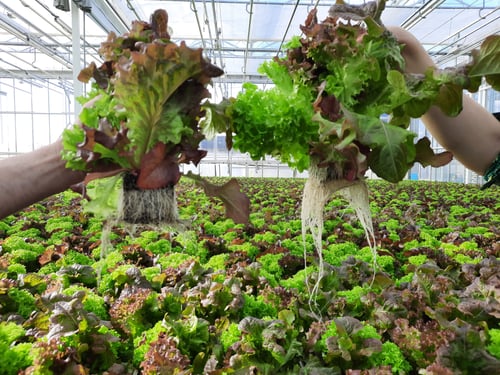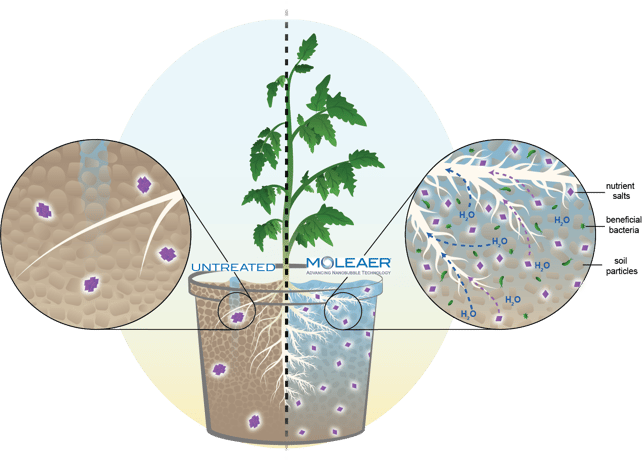Root zone health is essential for plant health and is heavily impacted by water quality, oxygen availability, pathogens and other environmental factors. Research has show that high quality irrigation water with super saturated levels of dissolved oxygen (DO) improve:
- Nutrient uptake
- Energy generation via ATP production
- Plant resilience & stress handling
- Photosynthetic Capacity
- Water uptake efficiency
Root cells generate all their energy via cellular respiration. To respire, root hair cells require ample oxygen from within the particles of the growth medium (soil, substrate or hydroponic), or within the flow of the Deep-Water Culture (DWC) system.

Anoxic (low oxygen) conditions favor harmful bacteria, while a highly oxygenated environment, created through the presence of nanobubbles, discourages disease pathogens from establishing sizable colonies. Highly oxygenated water also allows beneficial organisms like mycorrhizae, Bacillus, Trichoderma and Streptomyces to thrive.
Increasing oxygen in a stabilized and dissolved form creates ideal growing conditions within the root zone. However, this has been very challenging in the past.
TRADITION AERATION METHODS WON’T CUT IT
The most traditional approach has been aeration, simply mixing air and water, but conventional aeration methods all come with limited efficacy and serious challenges.
When injecting air into water using traditional aeration methods, the rate of oxygen transfer is typically very low and yields poor results. Complicating this is the fact that as water temperature increases, its capacity to hold dissolved oxygen (DO) decreases; when warmer water must be used to irrigate plants, the efficiency limitations of conventional aerators become even more pronounced.
NANOBUBBLE TECHNOLOGY
The ideal levels of oxygenation can be attained efficiently by utilizing nanobubble technology, which delivers far more effective results and benefits than traditional aeration.
Moleaer’s nanobubble technology does two things: delivers over 85% oxygen transfer efficiency to add supersaturated levels of dissolved oxygen into irrigation water and injects electrochemically charged nanobubbles that deliver multiple benefits. Increased dissolved oxygen levels maximize oxygen utilization by plants, promoting healthy root development and improving plants’ resilience to environmental stressors such as heat, while nano-sized bubbles provide an array of additional benefits.
What are Nanobubbles?
Nanobubbles are bubbles that measure below 200 nanometers in diameter– roughly 2500 times smaller than a grain of salt. Due to their size, nanobubbles hover within a liquid, instead of rising to the surface and popping as larger bubbles do, making them constantly available for participation in physical, biological
and chemical reactions.

Nanobubbles:
- Act like a mild, chemical-free oxidant
- Lyse algal cells and reduce harmful pathogens
- Scour biofilm in irrigation systems and prevent it from reforming
- Reduce the surface tension of water to improve infiltration and water use efficiency
- Aid in ionic mobility for improved nutrient uptake efficiency
Nanobubble Technology Maximizes DO
With the old aeration methods, growers were limited in the amount of DO they could achieve in their irrigation water. With nanobubble technology, growers can achieve up to 300% more DO.
As a result, oxygen nanobubble-enriched water has been proven to improve water quality, soil mycology, and root and plant health.


